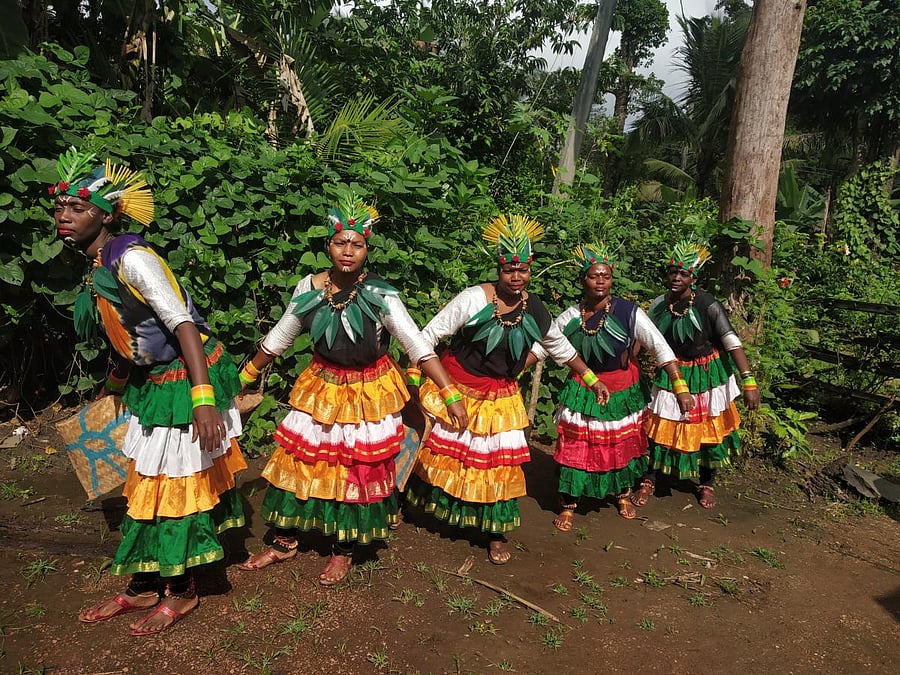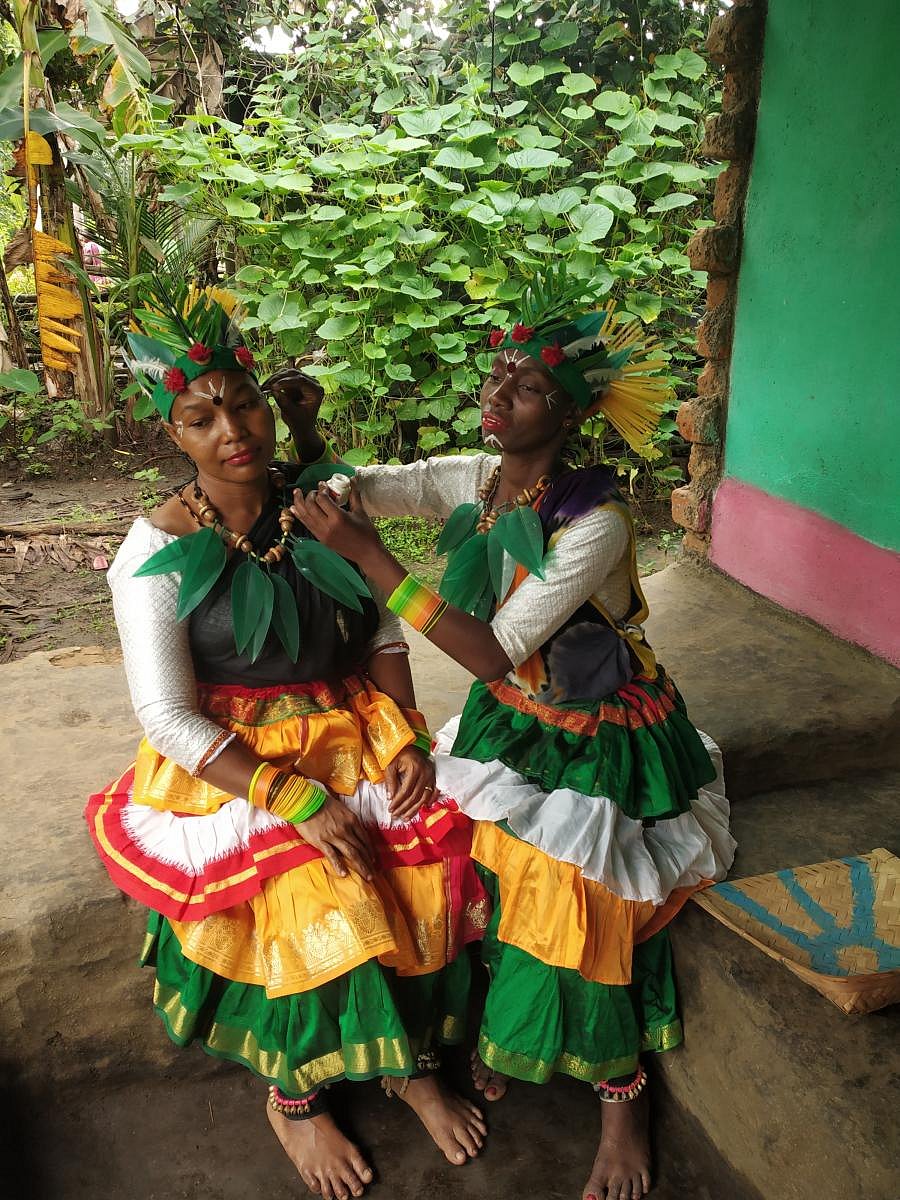

Sporting a headgear made of feathers, with strings of mango and jamun leaves around their neck and a design on the forehead painted in shades of deep red and white, a group of Siddi women sang a traditional folk song that pulled me in. I was visiting the forests of Sonar Jaddi in Yellapur taluk of Uttara Kannada district.
While following the song and the beats of a dhol (a traditional musical instrument) accompanying it, I stumbled upon women busy collecting red ants in a winnower.
While one woman used a long stick to knock the hive of red ants hanging from a huge tree, the others carefully collected the ants in their winnowers. All the time, a woman continued with the song, and some others moved in tune with it.
Sonar Jaddi, a hamlet tucked deep into the forests between Yellapur and Mundgod towns, is a cradle of Siddi culture. The Siddis are indigenous people who trace their origins to Africa. They dream of keeping their culture fresh as a wildflower. One such dreamer, who is helping keep the heritage alive, is Lilli Siddi.
Lilli formed a group called ‘Amche Madhle Damami Kunita’ to promote Damami Kunita, a unique dance of the Siddi community and introduce the world to this art form. With the support of her mother Monica Inthros Siddi and husband Jackey Siddi, she has been training youngsters in Sonar Jaddi and neighbouring hamlets in their traditional folk forms. Lilli composes Lavani Pada (folk songs) and entertains people by singing them in her own style. All these activities have helped cultivate an interest in the art among the children of the community.
Inspired by nature
The Siddis have a song for each occasion and draw their inspiration from their immediate natural environment — the fragrant flower, the rising and setting sun, sprouting seeds — to compose a song. They also have songs capturing every aspect of life in the tribal community: whether it is collecting red ants, welcoming guests or creating awareness about Covid-19.
It is not just the songs, but the Damami dance is also unique. “Dhol or Damamiye is one of the most important instruments used in this dance. This dhol weighs nearly 50 kg. Earlier, it was made of deer pelt, now goat skin is used. However, the sound produced by this instrument enthuses dancers even today,” says Jackey Siddi.
Earlier, the traditional dancers used to wear wildflowers and leaves while performing Damani dance. Now, they wear colourful dresses adorned with plastic leaves, while keeping the essence of their culture alive.
Lilli, who has great love towards the Siddi art forms, is an Accredited Social Health Activist (ASHA) worker too. Whenever there is any health emergency among people staying in the forest, she rushes there to help them. She has also helped a number of children, pregnant women and lactating mothers. Along with it, she teaches dance in nearby schools and motivates children to preserve their rich culture.
The rhythmic beats of the Damami, the sweetness of the folk songs, the energy of the dancers, and the red ant chutney made this visit a memorable one.
(Translated by Divyashri M Mudakavi)